Thailand Enticed Me Back For Another Visit
My first visit to Thailand was during the winter of 2008. The second visit was in September, 2009. I had believed that it wouldn’t be much hotter in late summer than it was in the Thai winter because it had been so scorching then. That assumption was incorrect. Every photo of me from that second Thai outing shows me drenched in sweat. Very becoming. Temperatures often exceeded 40 degrees Celsius.
Bangkok was especially torrid and muggy. The humidity was ghastly. I had never appreciated air condition so much before.
September also falls within the rainy season in Thailand. When it did rain – which it did often – it was came pounding down in torrents. You don’t experience rainfall like that outside of the tropics. Before long though the rain would stop and it would get sunny again. Then I’d start sweating again.
One of the drawbacks of being an avid photographer is being cursed with a stubborn insistence on lugging around a lot of camera gear where ever you go. No little compact shooter or smart phone will do. When I find myself traveling in a very hot place I sometimes can’t help but feel like a pack animal after carrying my camera kit around in the blistering heat for a while. But there have been occasions when I did leave my gear behind and ended up missing opportunities for getting some good photos. One night in Saigon I was sitting at an outdoor table at a restaurant and some young Vietnamese boys put on a fire-eating show on the street to wheedle some tips from the patrons. They were quite fearless and put on quite a spectacle They could spew flames out of their mouths and stick burning wands down their throats without harming themselves at all. Despite their young age they were clearly comfortable with what they were doing. It was quite electrifying to see. What fantastic images I could have captured with my camera if I had it with me.
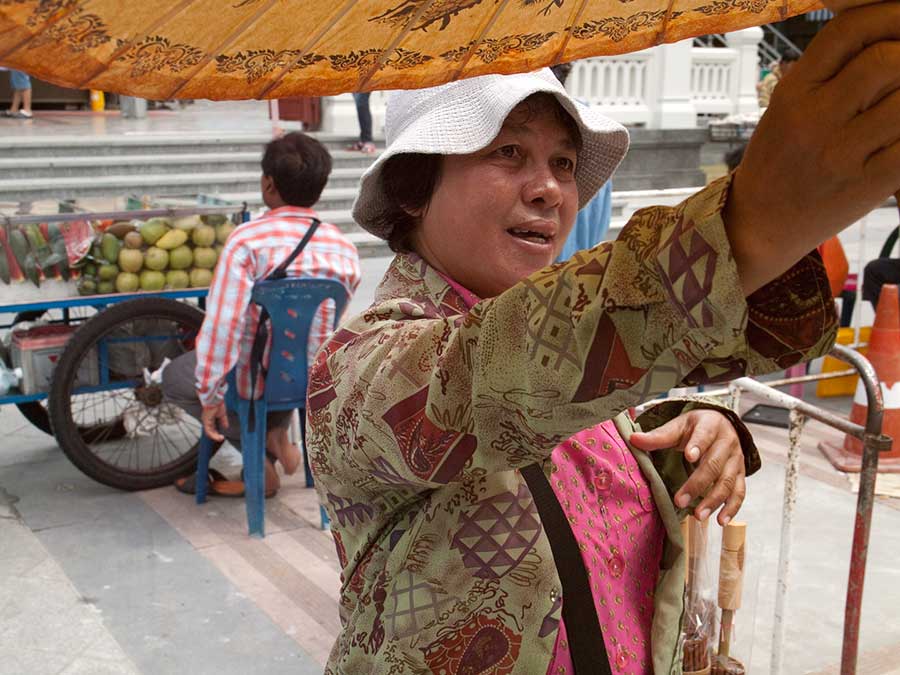
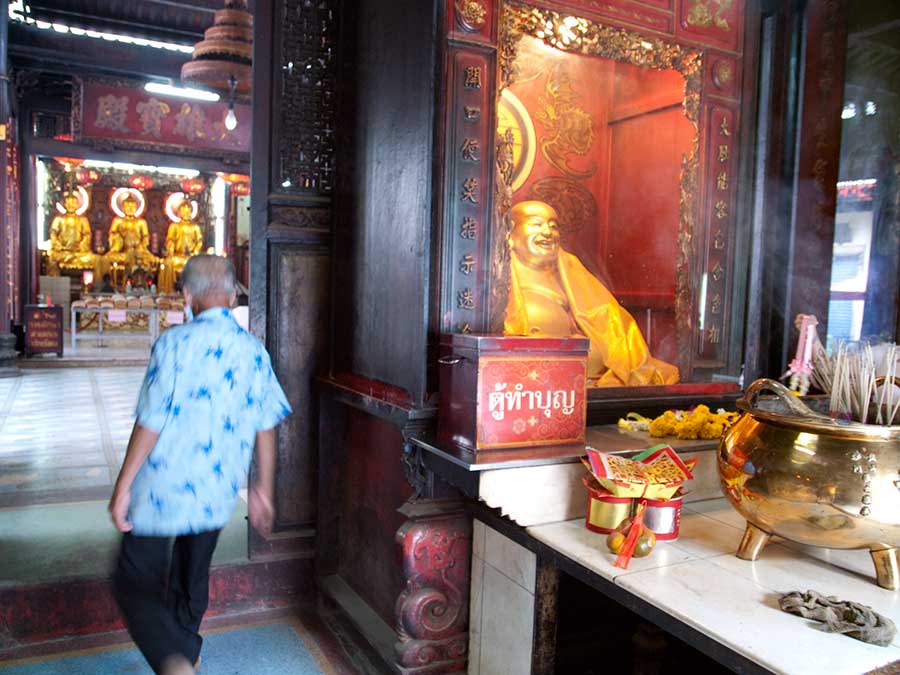
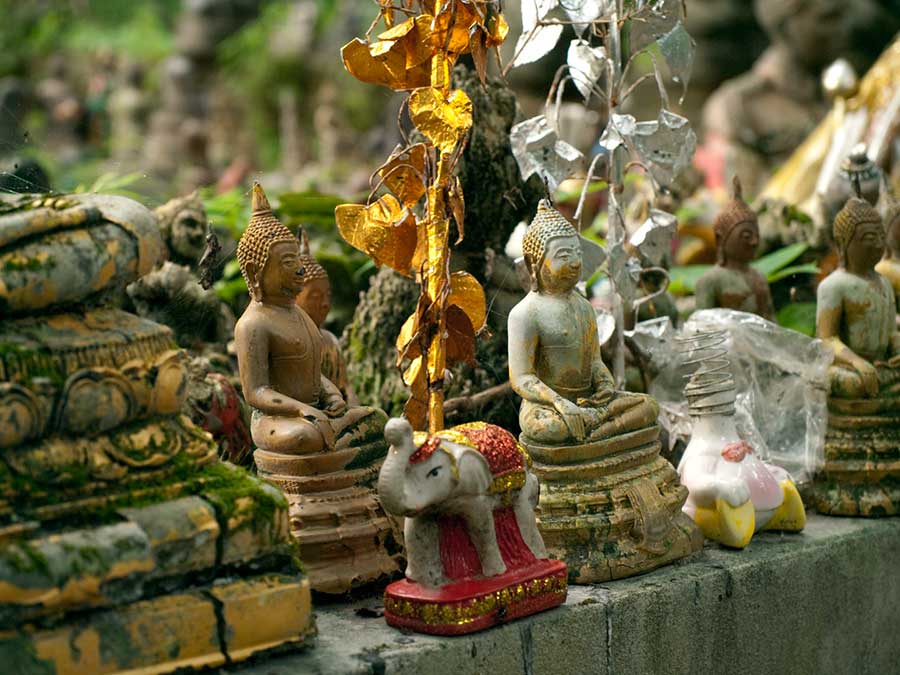
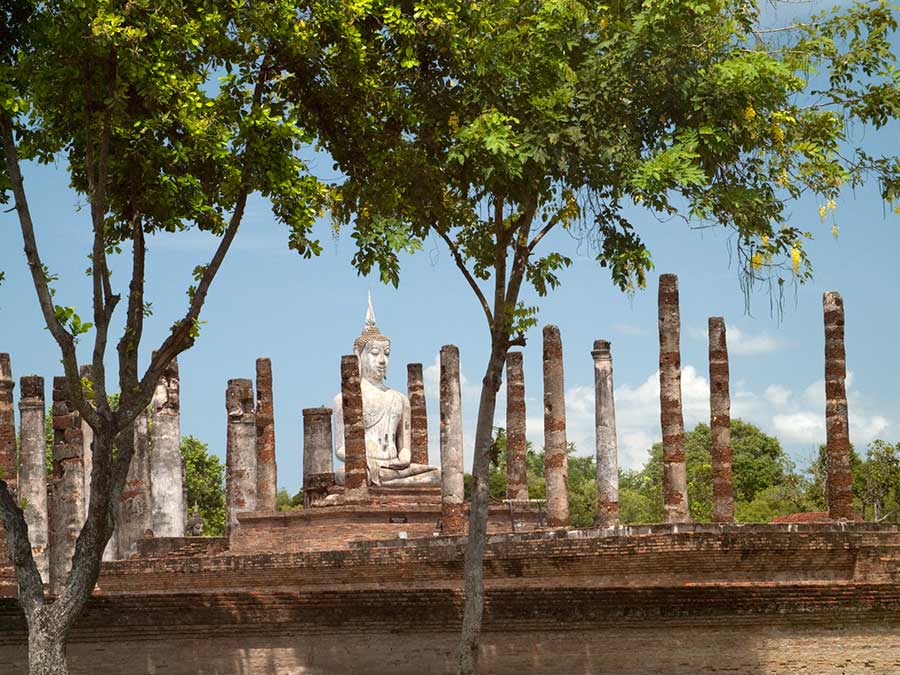
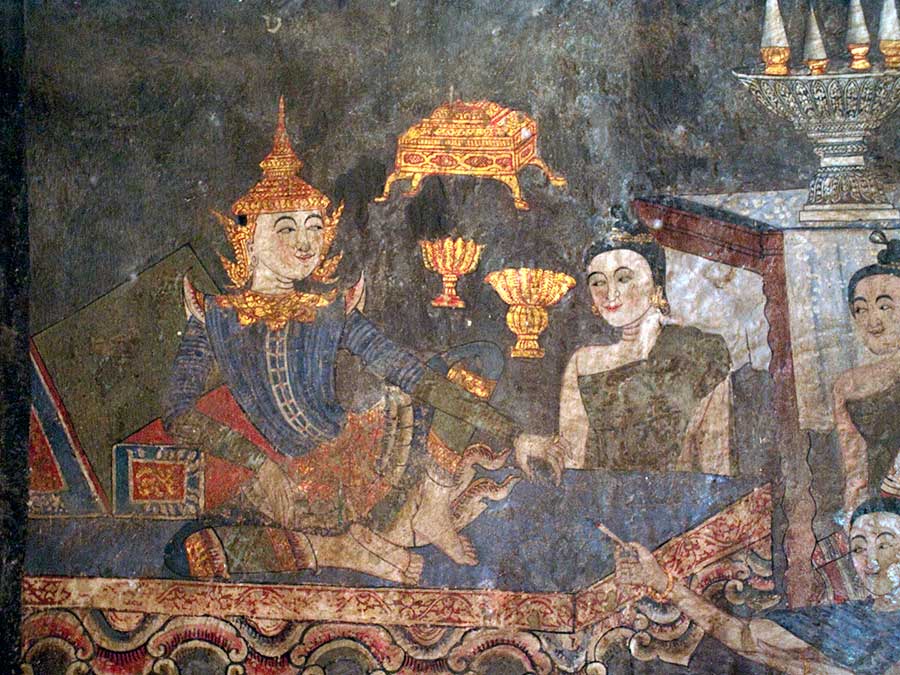
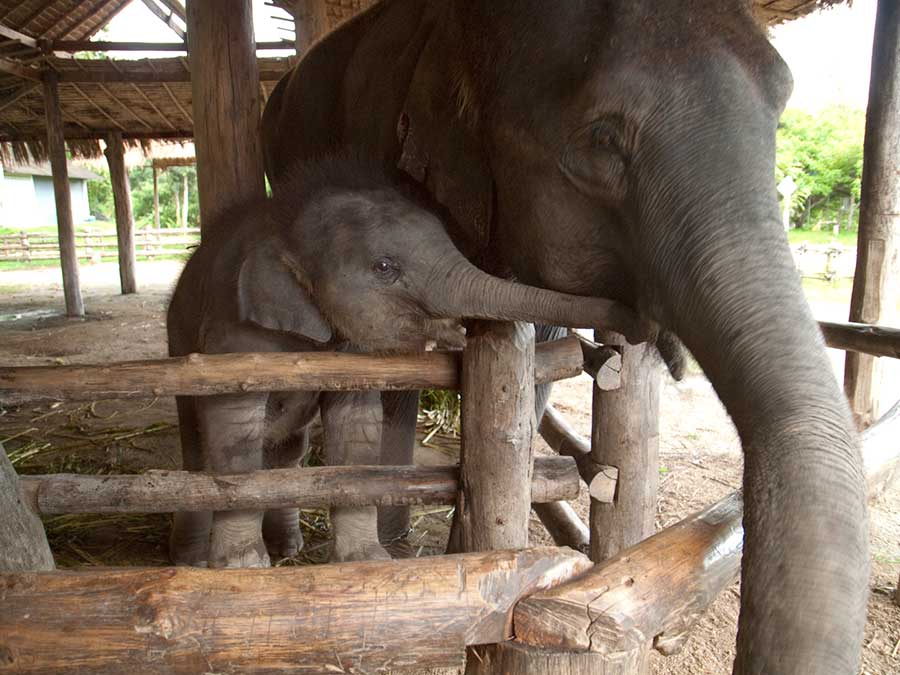
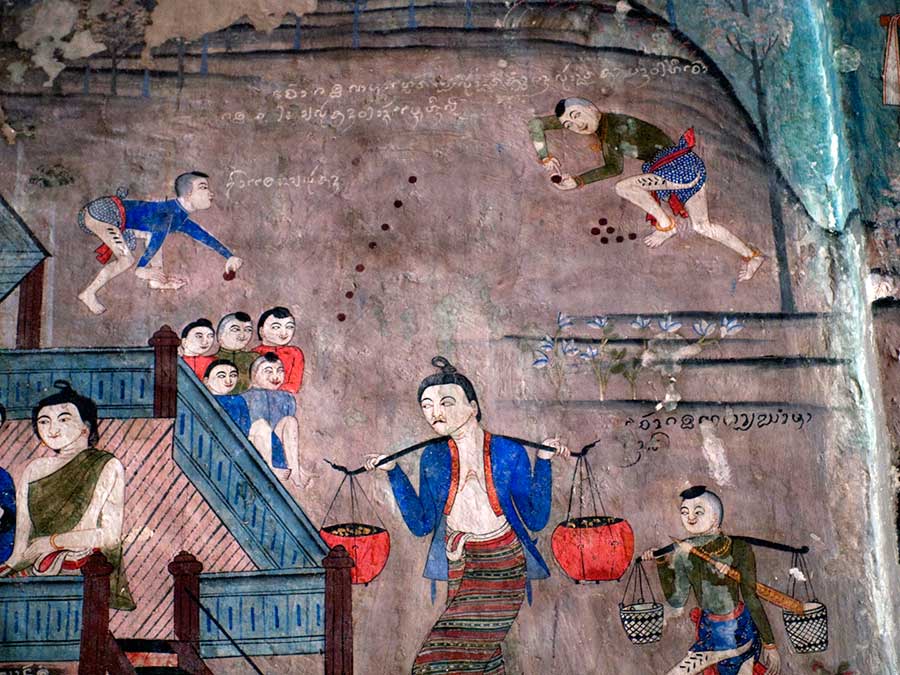
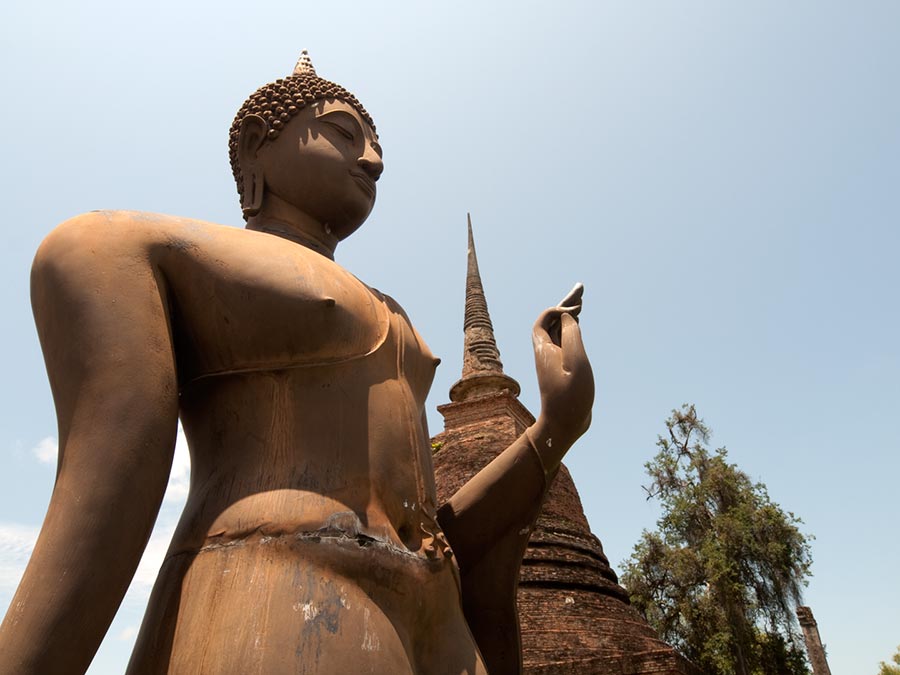
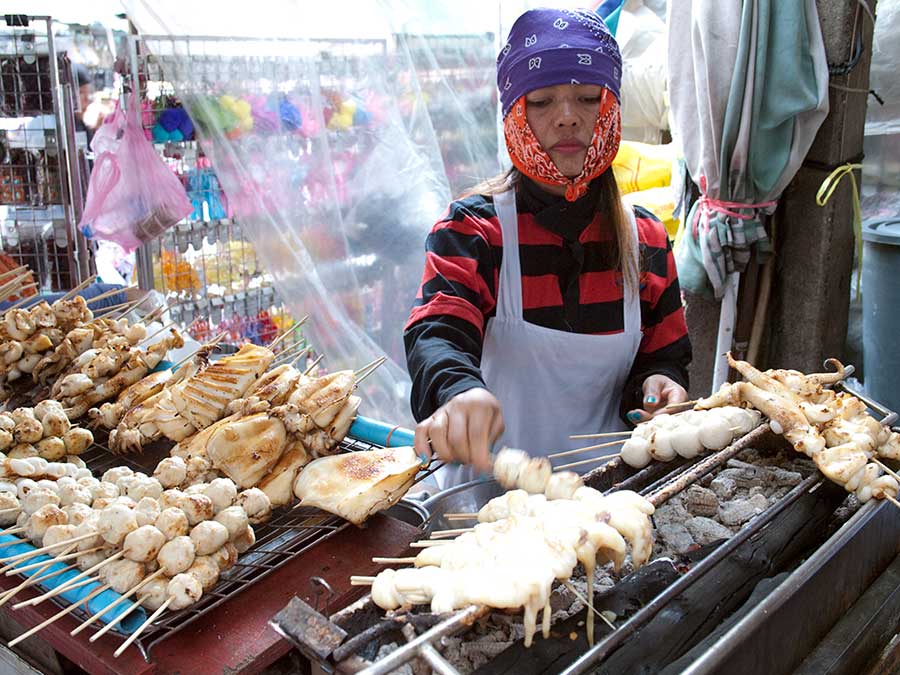
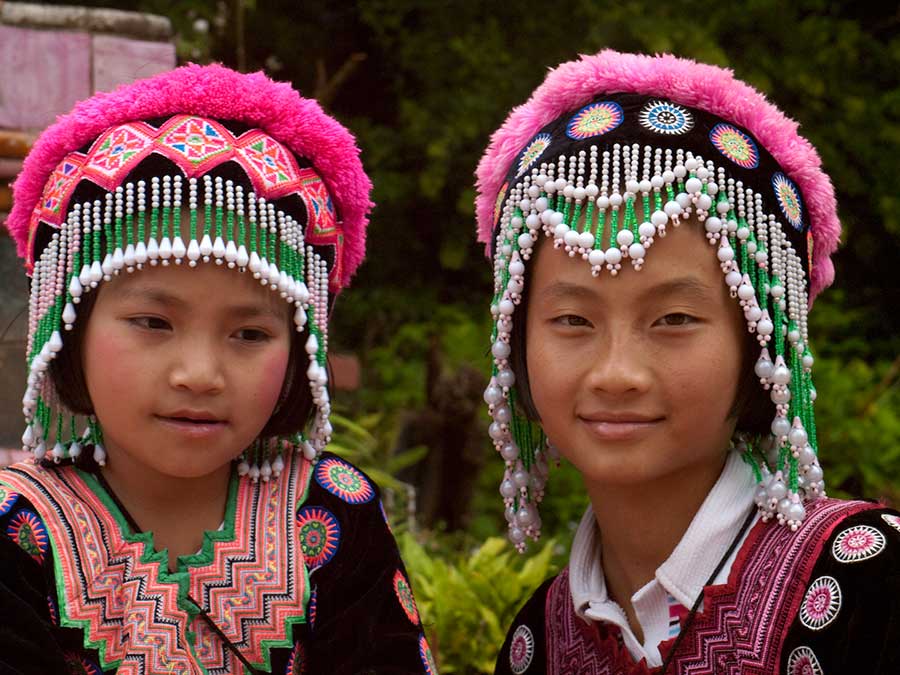
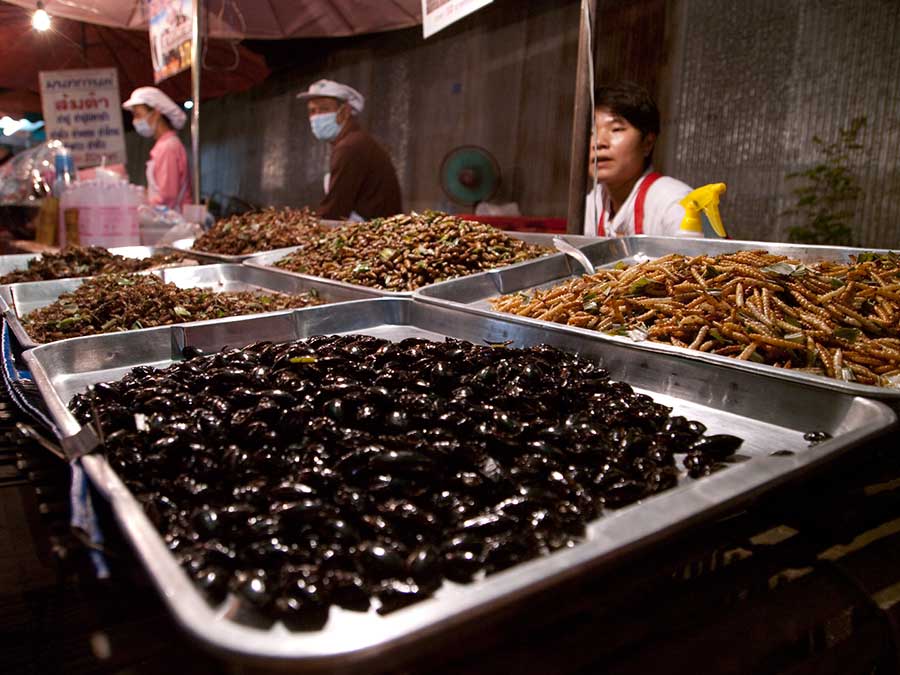
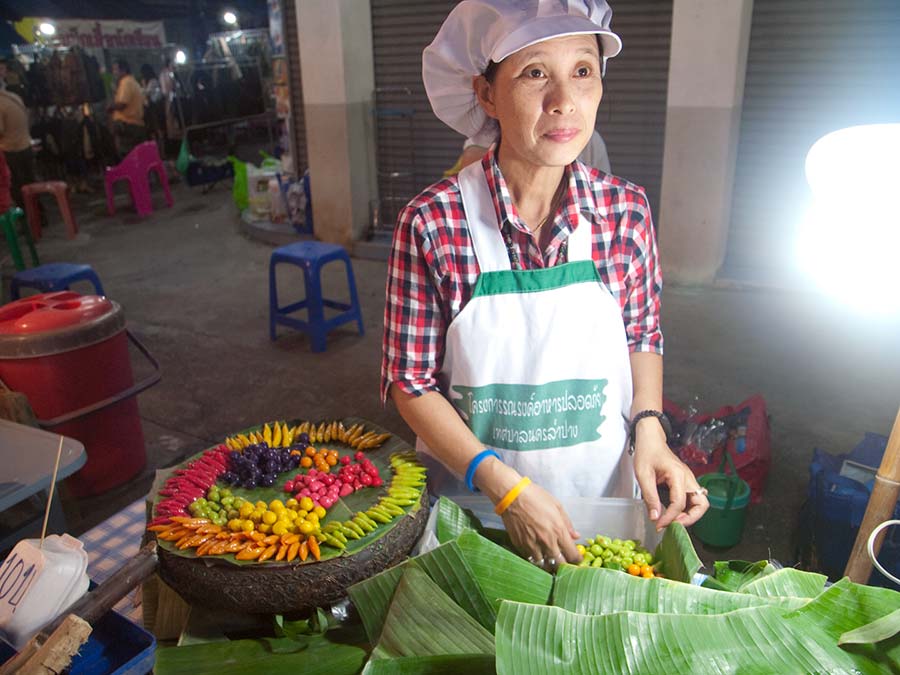
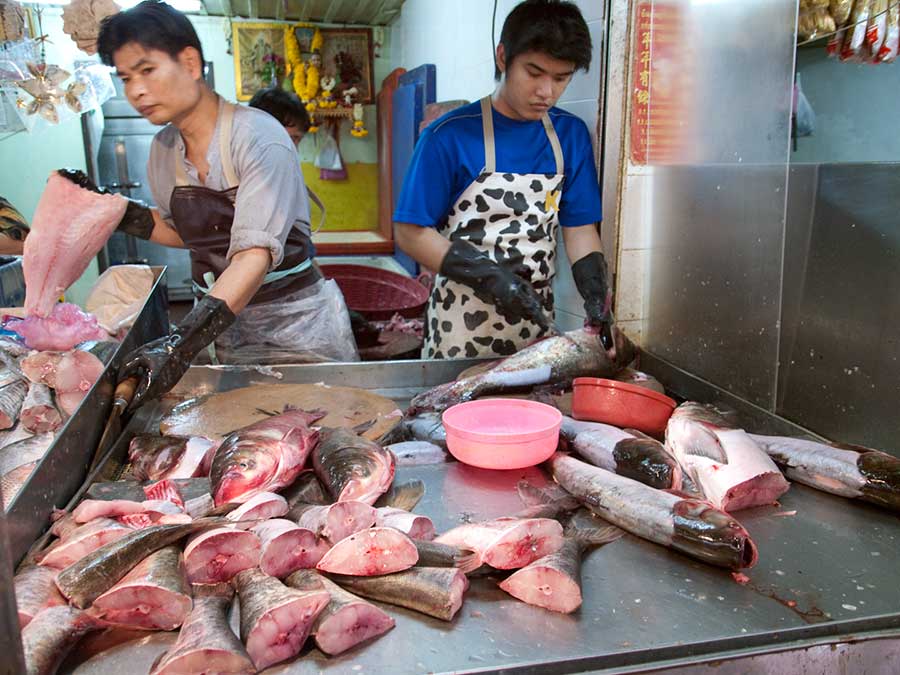
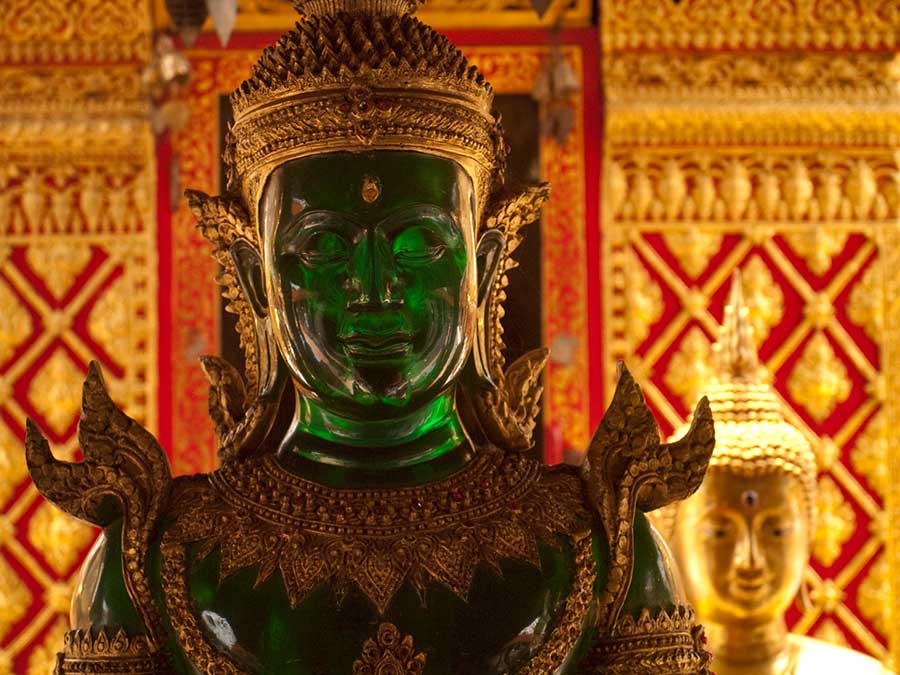
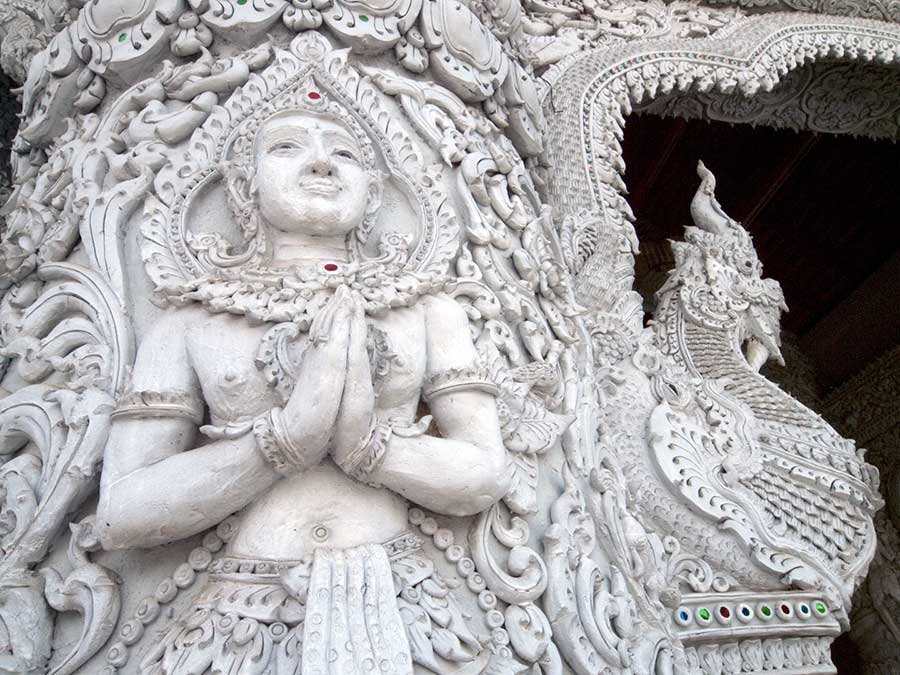
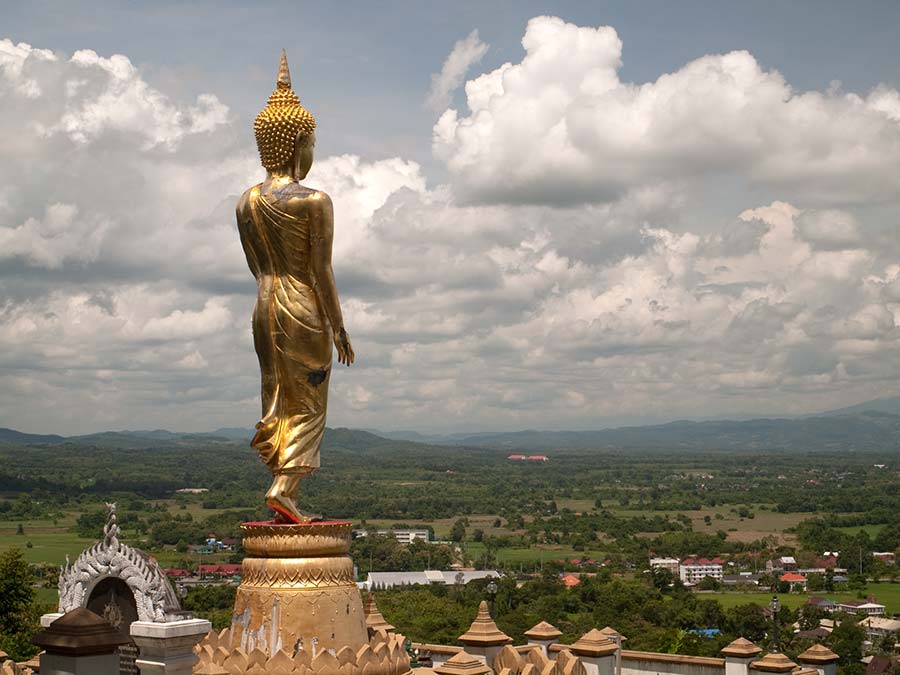
My second time in Bangkok gave me the chance to explore around Chinatown again. The Chinatown in Bangkok is easily the biggest I’ve ever seen. It’s also the most interesting. One temple there called Wat Mangon Kamaiawat is by itself reason enough to visit this part of town. The vibrant colours of the temple interior are captivating. There were no other foreigners there when I visited.
Bangkok’s Chinatown buzzes with activity. It’s densely packed with people and all manner of traffic. Yet it’s still chill in a typically Thai fashion. No one is going to offer you any hassle or get phased by you in turn.
The main road in Chinatown is Yaowarat. During the day it is often choked with traffic at a standstill. Traffic congestion is so bad during peak hours that many taxi drivers will refuse to take you to Yaowarat Road at those times. They are just not willing to try to get through the aggravating jam. In the time it would take to get there they could have several fares to other locations in the city.
Yaowarat Road is lined with many gold shops and these are great places to get bargains on gold jewelry. In one of these shops I saw huge stacks of bundled Thai paper money in plain view on the counter top within easy reach. There were many thousands of dollars worth sitting there. The merchants and their customers payed no heed to this. I guess you don’t have to worry about getting held up in Chinatown.
As I mentioned in mt first post about Thailand, public transit in Bangkok is pretty sparse, at least for travelers. Sure there is a subway line and there is also an elevated system called the Sky Train but these can only deliver you to a limited number of places. Buses are more plentiful but unless you can speak and read Thai, you won’t be able to make much sense of where they’re headed as all the on board signage is in Thai only. Inevitably you’ll need to take taxis or tuk-tuks to get to most places when you’re in Bangkok. Tuk-tuks are essentially motorcycles that tow a small cab behind them. These are a cheap way to get around. You always want to negotiate the cost of the ride before you hop in. You can, and probably should, haggle over the first price the driver quotes to you. This will almost always be successful as tuk-tuk drivers will, as a rule, try to charge inflated prices to tourists.
On the whole, tuk-tuk drivers aside, Thai people are very honest and will seldom try to take advantage of foreign travelers. As a rule, when I would ask the price of an item in a market the answer would fit with what I believed was a fare price by local standards. If I actually did end up paying a little more than a Thai person I didn’t care because what I was paying was a fraction of what it would have cost me at home.
In Lamphang Province in northern Thailand there is a refuge for elephants that had formerly been used in the logging industry. Increasing mechanization has made the use of elephants for hauling timber obsolete.
Occasionally in Thailand you’ll see a lone elephant with its keeper who will sell bags of fruit or sugarcane to passersby so they can feed them to the elephant. In this meager way, both the elephant and its keeper can earn a living. In many cases such elephants were previously exploited as living machines by the logging trade. Thai people are sentimental about elephants and enjoy the chance to feed one. There’s a superstition in Thailand that it’s good luck to pass underneath an elephant.
Before venturing up north to Chang Mai again, I paid a visit to the Elephant Conservation Center. This is the only government run elephant haven in the country. It’s function seems somewhat contradictory, at least at first glance. The facilities there include a veterinary hospital for treating injured elephants brought in from elsewhere and sanctuary is provided for elephants that used to be victims of the logging industry. There was about 50 elephants there when I visited so they all had plenty of company.
At the same time, the conservation center has some elephants trained to entertain visitors. Elephant rides are offered to tourists and the elephants are put through a routine of demonstrating techniques of logging with the use of elephants. Some of the elephants have even been trained to paint. One of the trainers would stand to one side and hand different paint brushes to an elephant as it faced an easel. The elephant tenderly grasped the brushes with its trunk and deftly applied paint to the paper on the easel. I was shocked and delighted in equal measure to see that the elephants were actually painting recognizable images. One painted a self portrait and a second one a vase of flowers. These were later offered for sale. The paintings looked remarkably like something a small child would produce. How do you go about teaching an elephant to paint ?
When you keep in mind that the elephants at the conservation center were all domesticated animals that were formerly put to work under less than humane circumstances, it doesn’t seem abusive to have them perform tricks for tourists. No elephants are trapped in the wild and brought there. It’s possible to stay at the center for extended periods as a volunteer to help with the upkeep of the elephants. During my visit I talked to a woman from England who was doing just that. If there was anything shady going on behind the scenes with respect to the treatment of the elephants I don’t think the administrators of the center would want a bunch of foreign animal lovers on the site 24 hours a day. In addition, visitors to the center are free to roam at will through the facility. I did and no one tried to steer me away from anything.
During the demonstration of logging techniques none of the elephants were given arduous tasks to perform. None of the handlers, known as mahouts, used coercive measures on the elephants. Each of the animals would also have known that after they finished the show the visitors would be given the chance to feed them corn, bananas, and sugarcane, all of which they clearly relished. Their diet staple at the center, is a type of tall grass. That may sound as boring to an elephant as it does to us.
Even if these wonderful animals had the ability to survive in the wild – which is unlikely – the fact is that very little of their ancestral habitat is left. Thailand is one of the most heavily deforested countries in Asia. From the plane on my flight to Bangkok I had seen the dense forests of Laos give way to the grassy farmland of Thailand as I flew over the Mekong River that forms the border between the two countries. It was jarring to see such disparate landscapes so close together.
I’m confident that the Elephant Conservation Center is the best place for the elephants that live there to be located. Watching them as they bathed and played in a large pool before they were to perform, it was clear to me that they were happy in that environment.
I made my way to Chang Mai next. While there I visited a hilltop temple called Wat Doi Suthep. This was an impressive sight but unfortunately much of it was covered with scaffolding as renovations were being carried out. On site is a sculpture referred to as the Emerald Buddha. It’s actually carved from jasper, not emerald. It’s a splendid piece in either case. It really looks like it’s made of green glass since you can see right through it. By then I had seen more Buddha statues than I could remember but this one was memorable. It looked like no other I’ve seen.
Another place I visited was the small city of Nan near the Laotian border. It’s tucked away in a valley of the same name. Few foreign tourists visit there. There are some interesting temples to visit including one called Wat Prathat Chae Haeng that has a snowy white exterior covered everywhere with intricate carvings of Buddhist religious iconography. I didn’t see anything like it anywhere else in the country. The interior had many small tiles on the walls that were actually glass mirrors. This was rather gaudy, as I suppose was the exterior in it’s over-the-top excess of detail. Still I liked the unique look of the temple despite the questionable taste of its design.
Nan’s main attraction for sightseers is Wat Phu Min, a Buddhist temple more than 400 years old. Inside are some spectacular murals. Some of these are religious in nature but many portray scenes of everyday life. These murals are probably the best known in all of Thailand. They are much younger than the temple is. They were painted in the 1890’s by an artist named Thit Buaphan and his style of painting is his own. I included two photos of the murals in the slideshow that accompanies this blog.